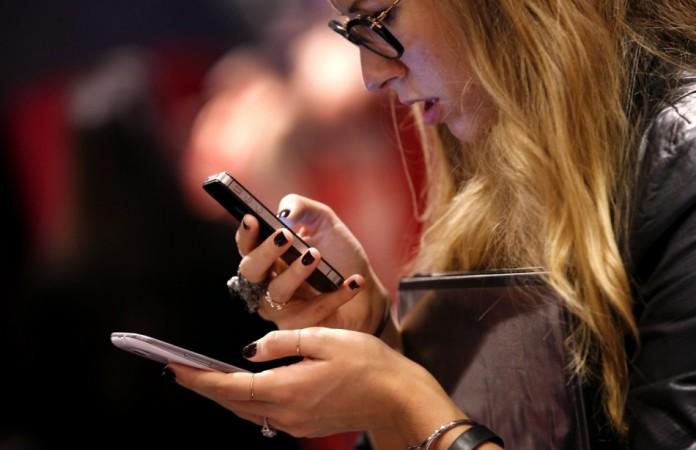
Earlier this week, Chinese consumer electronics giant, Xiaomi set foot in the Indian market with the official release of the flagship smartphone Mi3.
The company opened Xiaomi Mi3 online sale via Flipkart at 12 noon for pre-registered (numbering 100,000 plus, as claimed by Xiaomi) buyers and soon the smartphone stocks ran out exactly in 38 minutes 50 seconds.
[Note: As a good will gesture, Xiaomi has promised that those unlucky pre-registered user who could not buy the Mi3, will be given priority in the next week's sale, i.e., on 29 July (12:00 PM).]
Considering its feature-rich specifications and dirt-cheap price tag, Xiaomi Mi3 is all set to recreate a new storm just like Motorola's Moto G did in February earlier this year.
This month, the Indian smartphone market also witnessed the launch of few other tier-1 MNC branded devices from BlackBerry and Asus (makers of Google Nexus 7 tablets), with feature-rich specifications.
For prospective buyers who are contemplating to upgrade from an entry-level smartphone to a mid-range handset with high-end features - Xiaomi Mi3, Moto G, HTC Desire 616, Asus Zenfone 5 and BlackBerry are worth taking a look.
Here is brief description of stand-out features of Xiaomi Mi3, Moto G, HTC Desire 616, Asus Zenfone 5 and BlackBerry Z3
Display:
First up, the popular Motorola Moto G flaunts a 4.5-inch HD (1280x720p) screen with a pixel density of 329 ppi (pixels per inch). It also boasts of nano-coating on the sturdy polycarbonate body, enabling users to take/answer calls even in the rain. No other smartphone in the mid-range segment offer this value-added feature.
[Note: Users are warned not to take the phone for a dip in the pool]
The new Xiaomi Mi3 boasts full HD (1920x1080p) display with a staggering pixel density of 441 ppi (pixels per inch), that's not all, this feature-rich handset also boasts of the magnesium alloy body with three layers of thermal graphite film to withstand overheating of internal parts when the smartphone is utilized to its extreme, like playing high-graphics game, multi-tasking with numerous apps and so on.
On the other hand, HTC Desire 616 and Asus Zenfone 5 sports a 5.0-inch HD (1280x720p) screen with a pixel density close to 294 ppi.
Whereas, the BlackBerry phone, which is one of the most expensive of the lot, sports a less impressive qHD (960x540p) screen with a pixel density of just 220 ppi.
Processor, RAM, Storage capacity:
In this aspect, there is no competition to Xiaomi Mi3 as it boasts the Qualcomm's monster processor, Snapdragon (MSM8274AB) 800 series quad-core CPU (with Adreno 330 graphics engine), which can clock a max speed of 2.3GHz. It is also backed by a sumptuous 2GB RAM and 16GB inbuilt memory.
Asus Zenfone comes second, thanks to its 1.6GHz dual-core chipset (with Intel Hyper threading technology) and 2GB RAM with an expandable 8GB memory (up to 64GB).
HTC Desire 616, on the other hand, ships with 1.4GHz MediaTek's Octa-core processor backed by 1GB RAM and a paltry 4GB inbuilt storage, but this short coming has been compensated with a microSD slot option, which lets users to expand up to 32GB.
BlackBerry Z3 houses dual-core 1.2GHz snapdragon processor backed by Adreno 305 GPU, 1.5GB RAM and 8GB memory (expandable up to 32GB).
Moto G ships with the Snapdragon 400 series 1.2GHz quad-core processor (with Adreno 305 GPU) backed by 1GB RAM and 8GB/16GB inbuilt memory.
In terms of storage, Motorola and Xiaomi phone loses points as they fail to feature microSD card slot limiting its memory capacity. Other three smartphones come with an additional memory slot with expansion up to 32GB (and 64GB in case of Asus device).
Mobile Operating System Software:
In this aspect, Moto G holds the upper hand over the rivals as it ships with almost stock Android v4.4.2 KitKat OS (v4.4.4 update released in India). On the other hand, Xiaomi Mi3 runs on 4.4 KitKat with custom MIUI.
HTC Desire 616 and Asus Zenfone 5 ships with v4.3 Jelly Bean OS and Z3 comes with the BlackBerry v10.2.2 mobile OS with company's proprietary BlackBerry® Balance™ technology offering dedicated profiles to keep work and personal data separate and secure.
Though BlackBerry mobile ecosystem is very miniscule compared to the Android's million plus app collection, the former is very well renowned for its secured platform. For instance, the world's most powerful leader, Barack Obama (and also previous American Presidents) too uses BlackBerry OS based mobile phones.
Camera:
Both Motorola phone and BlackBerry Z3 houses same 5.0-megapixel camera with LED flash on the rear-side, but have feature different cameras on the front side. The former flaunts a 1.3-megapixel snapper and the latter has a 1.1-megapixel camera.
Xiaomi phone ships with 13.0-megapixel camera with dual-LED flash and a 2.0-megapixel snapper on the front. Both the cameras have full HD video recording ability.
HTC Desire 616 and Asus Zenfone 5 house similar camera specifications. They both come loaded with 5.0-megapixel main camera (with LED flash, auto-focus) and a 2.0- megapixel camera on the front.
Specifications wise, Xiaomi phone comes on the top, but it has to be remembered that the quality of the photograph depends on the type of the lens, size and aperture.
Price:
Xiaomi Mi3 is exclusively available at Flipkart for a dirt-cheap price of ₹13,999, but it has become very hard for fans to get their hands on it.
[Also read: Xiaomi Mi3 Stocks Sold Out within 1 Hour; Flipkart Opens Pre-Registration for 29 July Sale]
Motorola Moto G is available in two variants – 8GB and 16GB at Flipkart for ₹12,499 and ₹13,999
BlackBerry Z3, Asus Zenfone 5 and HTC Desire 616 are priced – 15,990, ₹12,999 and ₹16,900 respectively.
[Also read: 'Motorola Moto G vs. HTC Desire 310 vs. Lenovo A526 vs. Sony Xperia E1 Dual: Specification Comparison']
Key Specifications of Motorola Moto G, BlackBerry Z3, HTC Desire 616, Asus Zenfone 5 & Xiaomi Mi 3:
| Model | Motorola Moto G | BlackBerry Z3 | HTC Desire 616 | Xiaomi Mi 3 | Asus Zenfone 5 (A501CG) |
| Display | 4.5-inch HD (1270x720p) LCD screen with Corning Gorilla Glass 3 shieldPixel density: 329 ppi (pixels per inch) | 5.0-inch qHD (960x540p) screenPixel density: close to 220 ppi | 5.0-inch HD (720x1280p) screenPixel density: close to 294 ppi | 5.0-inch full HD(1920x1080p) IPS LCD screenPixel density: 441 ppi | 5.0-inch HD (1280x720p) IPS screen with Gorilla Glass 3 shieldPixel density: close to 294 ppi |
| OS | Android v4.4 KitKat | BlackBerry v10.2.1 | Android v4.2 Jelly Bean with HTC Sense UI | Android v4.4.2 KitKat optimized with MIUI version 5 | Android v4.3 Jelly Bean with Zen UI (upgradable to v4.4 KitKat) |
| Processor | Qualcomm Snapdragon 400 series quad-core processor with 1.2GHz CPU speed | 1.2GHz Qualcomm Dual-core CPU(chipset: MSM8230) | 1.4GHz MediaTek octa-core processor | 2.3GHz Qualcomm Snapdragon 800 series quad-core CPU | 1.6GHz dual-core Intel Atom CPU(with Intel Hyper threading technology) |
| GPU | Adreno 305 | Adreno 305 | Mali-450MP4 | Adreno 330 | PowerVR SGX544MP2 |
| RAM | 1GB | 1.5GB | 1GB | 2GB | 2GB RAM |
| Storage capacity | 8GB/16 GB variants | 8GB, expandable up to 32GB | 4GB, expandable up 32GB | 16GB | 8GB, expandable up to 64GB |
| Camera | Main: 5.0-megapixel camera with LED flashFront: 1.3-megapixel camera | Main: 5.0-megapixel camera with flash, 5 x digital zoom, image stabilization, full HD video recording and moreFront: 1.1-megapixel camera fixed-focus camera, HD (720p) video recording ability | Main: 8.0-megapixel camera with LED flash, HDR, full HD video recordingFront: 2.0-megapixel camera with HD (720p) video recording ability | Main: 13.0-megapixel camera with auto-focus, dual-LED flash, HDRFront: 2.0-megapixel camera (with full HD video recording ability) | Main: 8.0-megapixel camera(Also boasts PixelMaster camera with features such as Selfie Mode and Depth of Field Mode, Low Light Mode and Time Rewind to enhance photography)Front: 2.0-megapixel camera |
| Battery | 2,070 mAh; Can provide power for close to 24 hours under mixed media usage | 2,500 mAh (non-removable);Talk time: up to 15.5 hoursStandby mode: close to 16.2 days | 2,000 mAh | 3,050 mAh; (non-removable) | 2,110 mAh;Talk time up to 18 hours (3G)Standby mode: close to 353 hours (3G) |
| Network | 3G | 3G | 2G & 3G | 3G | 2G & 3G |
| Add-ons | Wi-Fi (802.11 b/g/n),Bluetooth v4.0, USB, GLONASS/ GPS integrated with Google Maps, | Bluetooth v4.0 LE (Low Energy) with aptX, Wi-Fi (802.11 b/g/n; 2.4GHz), Assisted-GPS,FM Radio, dual-microphone for noise cancellation, on-screen LED indicator, proprietary BlackBerry® Balance™ technology offering dedicated profiles to keep work and personal data separate and secure | Dual-SIM slots, Bluetooth v4.0 with A2DP, Wi-Fi (802.11 b/g/n), micro-USB v2.0, | Mini-SIM, Bluetooth v4.0, Wi-Fi (802.11 a/b/g/n/ac), micro-USB v2.0, A-GPS, GLONASS | Dual-SIM slots, Bluetooth v4.0 (EDR, A2DP),Wi-Fi (802.11 b/g/n), A-GPS, GLONASS integrated with Google Maps, USB, microSD card slot |
| Dimensions | 129.9 x 65.9 x 11.6 mm | 140.0 x 72.8 x 9.26 mm | 142.0 x 71.9 x 9.2 mm | 144.0 x 73.6 x 8.1 mm | 148.2 x 72.8 x 10.34 mm |
| Weight | 143 g | 164 g | 150 g | 146 g | 145 g |
| Price | 8GB: ₹12,499;16GB: ₹13,999; | ₹15,990 | ₹16,900/- | ₹13,999 | ₹12,999/- |





!['It's not Mumbai traffic, it's air traffic': Suriya apologises to Mumbai media after paparazzi yelled At Him for making them wait for hours [Watch]](https://data1.ibtimes.co.in/en/full/806234/its-not-mumbai-traffic-its-air-traffic-suriya-apologises-mumbai-media-after-paparazzi.jpg?w=220&h=138)
![Bigg Boss 16-fame Sreejita De and Michael Blohm-Pape exchange wedding vows in dreamy Bengali ceremony [Inside Pics]](https://data1.ibtimes.co.in/en/full/806233/bigg-boss-16-fame-sreejita-de-michael-blohm-pape-exchange-wedding-vows-dreamy-bengali-ceremony.jpg?w=220&h=138)






